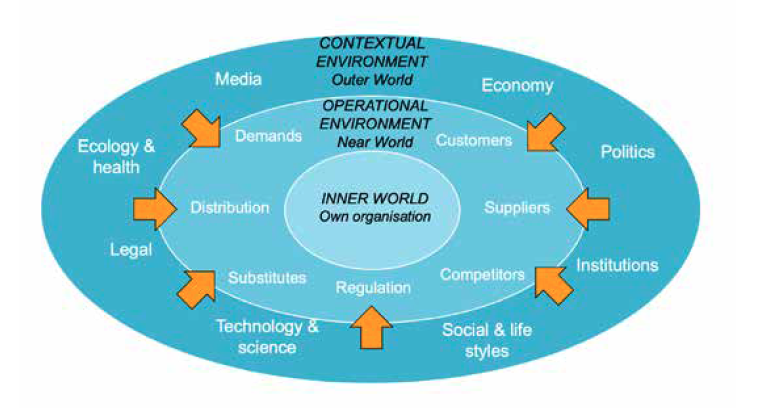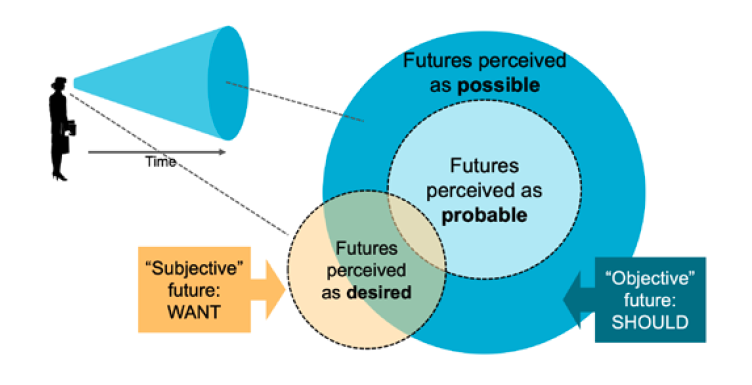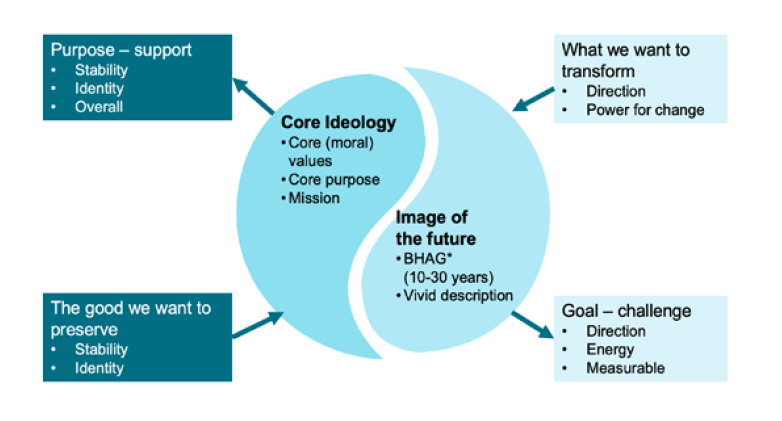The Art of Long Term Planning
Switching between short-term and long-term planning is an art. Even though short-term perspectives seem overwhelming right now, companies still have a lot to gain from thinking long-term. In this article, we’d like to provide you with some inspiration on how to practice long-term thinking. It is precisely in periods of economic turbulence like this one it is needed the most.
Many, if not most, companies are fully engaged in dealing with the multiple crises here and now. The rocky road ahead includes climate challenges, heightened geopolitical tensions, possible new pandemics, economic turbulence with political unrest, and conflicts that threaten to escalate. Change is the only constant. On the bright side, there is the tremendous innovation and technological development that we will see even more of, not least in the transition to a fossil-free society.
The big breakthrough of electric cars is imminent, and alternative types of energy are increasing its share in the energy mix. Technological developments with AI, digitalization and automation are driving forces that affect all industries and have enormous potential. Major infrastructure investments are underway with high-speed trains, electrification of roads, and self-driving cars. The massive investments in fossil-free steel production in northern Sweden also raise hopes for a brighter and cleaner energy future.
How then should an organization act in a landscape of turbulence and uncertainty? Can companies and organizations create stories that inspire and take development steps that call for action for a better future? The answer to that question is yes. Simply because it is human nature to constantly seek new futures, we have always done so and most likely always will. Let’s take a closer look at how to do future planning – in practice.
To understand the future
Many people find it interesting and exciting to read about the future and what it can and could mean for the world and themselves. Unfortunately, most also stop there. When development is uncertain and challenges are big, methodical and systematic work is required to create ways forward and value for the organization.
Almost always, the process begins with understanding, i.e., understanding what major changes are taking place in the world, society, and industry, and what significance they have for one’s organization. This includes understanding possible future downstream consequences of these changes and how they could impact the organization. Typical methods for understanding where the world is heading are business intelligence, situational analysis (including trend and uncertainty analysis), scenario planning, as well as actor and competitor analysis. To create tangible benefits from collecting knowledge, one should prioritize the most significant impact on the industry and organization in question. The easiest way is to start by brainstorming trends, changes, and events that affect the market in which you operate.
Below is a simple step-by-step approach you can start with together with some colleagues:
1. Designate a ”future group” that will work together, consisting of two to five people.
2. Scout and select the trends, serious predictions, changes, or events that you think have the greatest impact on your particular organization. Three to five trends are enough.
3. Discuss and debate as a group about the consequences that these trends may have, both threats and opportunities.
4. Select three to five of the consequences you deem most relevant for your organization. Preferably both threats and opportunities, and sketch out action plans to meet the threats and take advantage of the opportunities.
5. When you feel that you are working on the first action plans and everything is flowing, go back to point two above and select new trends and consequences to work with. Systematically structure your trends, for example, according to the world map below.
6. If you aim to produce a set of trends that fit each area in the external map below, you essentially have the beginning of a so-called situational analysis. Complement these with trends and events in the local world that are the arena or industry your organization operates in.
7. Construct an image of the future based on the trends and consequences you’ve mapped out. What could development look like in the next 5–10 years? What constitutes a likely development?

Figure 1. The three dimensions: Contextual environment – Outer world: the world we cannot control; Business arena – operational environment – near world: the world we can influence to some (limited) extent; Inner world: the world we control (= own organization), the organizational self.
If you follow the workflow above, you’ll have the necessary foundation to stand on to move forward with your future work. Depending on what you need to prioritize, the next step is to start formulating the most desirable future to lay out a vision.
Why positive stories about the future matter
Visions, targets, and scenarios are examples of methods for closing in on the future. As human beings, it is a critical ability to travel to different futures (note the plural) using our imagination. Everything created by humans we see around us started off as simple images of the future, mere ideas. Creation involves many brains, hands, and feet. Through innovation, communication, and collaborations between people stories, images of the future, and ideas are translated into drawings, prototypes, concepts, and finally into finished products or services.
People are not only biological beings but also beings of language. Language weaves stories without which we are not human. We need them as part of our identity, and for the lives we live. We also need stories in the businesses we operate in, stories about how the future develops, including our organizations’ future history (tricky concept).
In politics, the party that creates the most attractive depiction of the solutions to societal problems (the future) will win the most votes. Today, the battle for these stories seems more challenging than ever. Or is that perhaps due to the lack of a healthy and well-built vision of our society’s future? Yuval Noah Harari, author of Sapiens, recommends voters to ask this question to any politician running for office: How do you see the world of 2040? This is intimately linked to what we just discussed: being able to sketch out a vision.
Visualize the desired future
”If you don’t know where you are going, any road will get you there.”
The quote comes from Lewis Carroll's book Alice in Wonderland and is the answer to Alice's question to the cat about which path to take. This advice illustrates the need to create visions and objectives.
An environmental analysis based on business intelligence shows one or more plausible futures. The overall picture of trends and consequences shows a future that is fully possible and likely, i.e. it can happen. The vision represents the desirable future i.e. what do we want to be in the light of the likely future. The image illustrates the different dimensions of the future.

Figure 2. Different futures to relate to.
Developing a new vision is not something that is to be taken lightly. Many have been involved in unsuccessful attempts, and others have visions, though not inspiring or straight-out unclear. Developing a vision demands time and commitment and ideally requires that as many people as possible be involved in the process. This work often goes hand in hand with situational analysis and strategy work.
The vision should be based on your organization’s fundamental purpose and meaning. For example, all Telecom companies have an intimate link to Alexander Graham Bell’s purpose of the telephone network: a tool for universal communication. All companies and organizations in the healthcare sector have a primary duty of improving human health. A third example is insurance companies that exist as a tacit agreement with society, one seeking to share and manage risks. Otherwise, life would be highly unfair.
Here’s what you can do to create an engaging vision for your organization:
- Gather in the same ”future group” as above.
- Clarify why the organization exists. What is the meaning and purpose of the business?
- Create stories about a desirable future where everything works out for the best in the best of all possible worlds! For example, by writing "letters from the future" as if it were here and now.
- Pick out the most desirable and visionary parts from the letters and use those in the form of building blocks for a shared vision.
- Feel free to sort building blocks based on those that involve a change and those that are to be preserved (the foundation).
- Involve others in the same process and add more building blocks.
- Prioritize the most desirable building blocks, compile and finally formulate a ”vision portal” that is usually a short sentence that can be easily grasped.
- Communicate the results, invite participants to discussions and concretize how to start moving towards the vision.
- This entire process usually entails a next step: strategy work.

Figure 3. Overview of the vision components
Remember that future analysis is not an exact science but rather a beautiful art. Or like Peter Sellers, a popular actor during the 1960s and 70s, said:
”Future research is to scratch before it starts itching.”
The art of intelligence and futures analysis, like anything else, requires training. At Kairos Future, we have been developing methods and tools for situational analysis, environmental strategy development, and innovation for 30 years. Welcome to read more about our courses that covers these methods or contact Johanna Danielsson to talk about how we can assist you in successfully approaching the future.
This is an updated version of an article which was previously published in 2021 by Göran Krafft.
